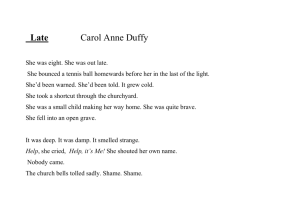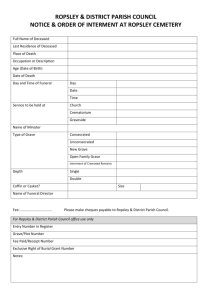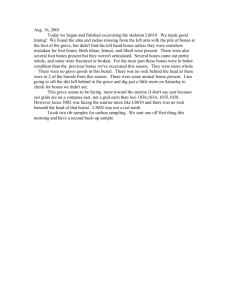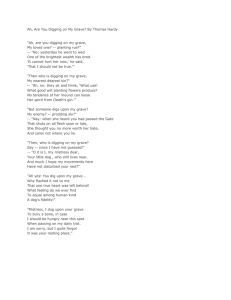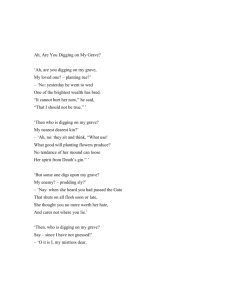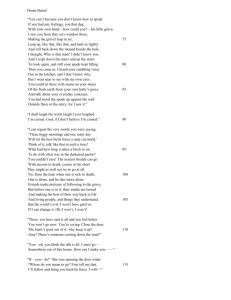Evidence from the Unmarked Grave
advertisement
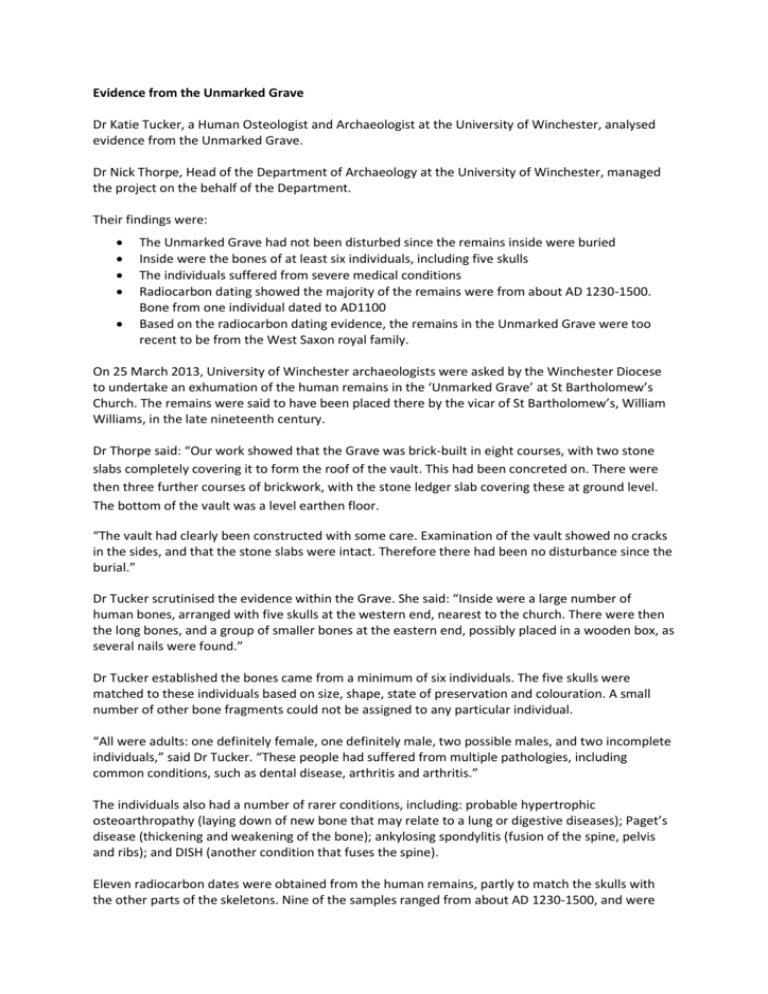
Evidence from the Unmarked Grave Dr Katie Tucker, a Human Osteologist and Archaeologist at the University of Winchester, analysed evidence from the Unmarked Grave. Dr Nick Thorpe, Head of the Department of Archaeology at the University of Winchester, managed the project on the behalf of the Department. Their findings were: The Unmarked Grave had not been disturbed since the remains inside were buried Inside were the bones of at least six individuals, including five skulls The individuals suffered from severe medical conditions Radiocarbon dating showed the majority of the remains were from about AD 1230-1500. Bone from one individual dated to AD1100 Based on the radiocarbon dating evidence, the remains in the Unmarked Grave were too recent to be from the West Saxon royal family. On 25 March 2013, University of Winchester archaeologists were asked by the Winchester Diocese to undertake an exhumation of the human remains in the ‘Unmarked Grave’ at St Bartholomew’s Church. The remains were said to have been placed there by the vicar of St Bartholomew’s, William Williams, in the late nineteenth century. Dr Thorpe said: “Our work showed that the Grave was brick-built in eight courses, with two stone slabs completely covering it to form the roof of the vault. This had been concreted on. There were then three further courses of brickwork, with the stone ledger slab covering these at ground level. The bottom of the vault was a level earthen floor. “The vault had clearly been constructed with some care. Examination of the vault showed no cracks in the sides, and that the stone slabs were intact. Therefore there had been no disturbance since the burial.” Dr Tucker scrutinised the evidence within the Grave. She said: “Inside were a large number of human bones, arranged with five skulls at the western end, nearest to the church. There were then the long bones, and a group of smaller bones at the eastern end, possibly placed in a wooden box, as several nails were found.” Dr Tucker established the bones came from a minimum of six individuals. The five skulls were matched to these individuals based on size, shape, state of preservation and colouration. A small number of other bone fragments could not be assigned to any particular individual. “All were adults: one definitely female, one definitely male, two possible males, and two incomplete individuals,” said Dr Tucker. “These people had suffered from multiple pathologies, including common conditions, such as dental disease, arthritis and arthritis.” The individuals also had a number of rarer conditions, including: probable hypertrophic osteoarthropathy (laying down of new bone that may relate to a lung or digestive diseases); Paget’s disease (thickening and weakening of the bone); ankylosing spondylitis (fusion of the spine, pelvis and ribs); and DISH (another condition that fuses the spine). Eleven radiocarbon dates were obtained from the human remains, partly to match the skulls with the other parts of the skeletons. Nine of the samples ranged from about AD 1230-1500, and were therefore probably from the later period of the monastic cemetery. Bone from one adult dated to around AD 1100, so could have been one of the earliest burials after the founding of Hyde Abbey. Dr Tucker said the evidence pointed to one conclusion: “The occupants of the Unmarked Grave were not among the West Saxon royal family whose remains were relocated from the New Minster. “I would say the feeling among the project team was disappointment, although personally I wasn't that surprised. The remains were in very good condition and were very complete. I wouldn't have expected that for bones that had been dug up and haphazardly reburied in the 18th Century.” Dr Thorpe added: “We do not know exactly where the people in the Unmarked Grave were buried in the Abbey, but the frequency and severity of their medical conditions is unusual and may mean that they were buried separately from the rest of the dead. Perhaps some of them were believed to have acquired a degree of sanctity by virtue of their physical pain during life, connected with medieval ideas of rejoicing in suffering and enduring purgatory while still alive.”

